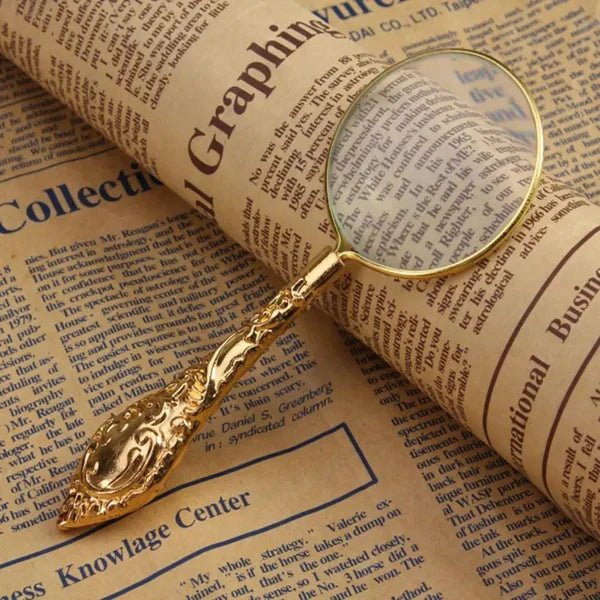
The Complete Guide to Magnifying Glasses: History, Science, and Modern Uses
Share
Introduction
The magnifying glass is one of humanity’s oldest optical inventions, yet it’s still incredibly useful today. From ancient scholars studying manuscripts to modern scientists examining specimens, this simple device bridges the gap between curiosity and clarity.
In this guide, we’ll explore the origins of magnifying glasses, how they work, the different types available, and how to choose the perfect one for your needs.
A Brief History
The earliest known magnifying lenses date back to ancient Egypt and Mesopotamia, where crystal “lenses” were used to enhance vision. The Romans documented the use of glass globes filled with water for magnification.
By the 13th century, magnifying glasses had become a common scholarly tool in Europe. This invention laid the foundation for microscopes and telescopes, shaping the course of science forever.
The Science Behind the Lens
A magnifying glass uses a convex lens to bend (refract) light rays. When held at the correct distance from an object, the lens enlarges the object’s image. The closer the focal length, the higher the magnification.
Types of Magnifying Glasses
- Handheld Magnifying Glass – Classic style for general use.
- Stand Magnifier – Ideal for long reading or craft work without holding the lens.
- Jeweler’s Loupe – Very high magnification for detailed inspection.
- Fresnel Lens – Ultra-thin plastic sheets for large surface magnification.
- Digital Magnifier – Uses a camera and screen to enlarge images electronically.
Modern-Day Uses
- Education: Teaching children about optics and observation.
- Science & Research: Studying specimens in biology and geology.
- Industry: Quality inspection in manufacturing.
- Medicine: Assisting in precise surgical or diagnostic work.
- Accessibility: Helping those with visual impairments maintain independence.
How to Choose the Right Magnifying Glass
- Purpose: Reading, hobby, professional use, or fieldwork.
- Magnification Level: Low for reading, high for detailed inspection.
- Lens Material: Glass is more durable; acrylic is lighter.
- Lighting: LED options improve visibility in dim conditions.
- Portability: Consider folding or pocket-sized models for travel.
Care and Maintenance
- Store in a soft case.
- Avoid extreme temperatures (can warp plastic lenses).
- Clean regularly to maintain clarity.
Fun Fact: The Magnifying Glass in Pop Culture
From Sherlock Holmes’ iconic detective work to animated characters like Inspector Gadget, magnifying glasses have long been symbols of curiosity and discovery.
Conclusion
The magnifying glass might be simple, but it’s one of the most enduringly useful tools in human history. Whether you’re solving mysteries, exploring nature, or just trying to read the fine print, this classic device continues to serve as a gateway to the finer details of life.
FAQs
1. What is the highest magnification for a standard magnifying glass?
Typically around 10X–12X before image distortion becomes significant.
2. Can I travel with a magnifying glass in hand luggage?
Yes, it’s usually allowed, but check your airline’s guidelines.
3. Is glass or acrylic better for the lens?
Glass offers better clarity and scratch resistance; acrylic is lighter and less breakable.
4. Can a magnifying glass be used to start a fire?
Yes, but only in direct sunlight with dry, flammable material — use responsibly.
5. Are magnifying glasses good for kids?
Absolutely! They’re great educational tools for learning about science and nature.
